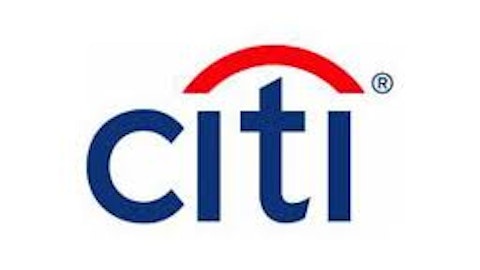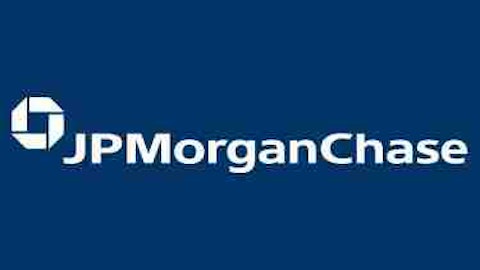
The financial sector continues to outperform the S&P
Source: Ycharts
The Financial Select Sector SPDR (ETF) (NYSEMKT:XLF) has been able to outperform the SPDR S&P 500 ETF, by 6.5% year-to-date. The Financial Select Sector SPDR (ETF) (NYSEMKT:XLF) Fund currently offers a 1.59% distribution yield (similar to a dividend,) and charges a 0.18 expense ratio. The distribution yield pays for the management fee; the fund also offers diversification across a basket of 83 financial stocks.
The Financial Select Sector SPDR Fund’s out-performance is driven by three primary factors:
Larger performance based fees from asset management (stocks are at all-time-highs, remember?)
Declining loan allowances, net charge-offs (money lost on lending), and administrative expenses (falling headcounts).
Improving macroeconomic indicators (consumer sentiment, unemployment, household formations, and GDP).
Going into earnings season I was worried about the financial sector’s ability to beat earnings, because of mark-to-market accounting practices, which would force the banks to report a decline in earnings because of falling stock prices.
Another concern was losses related to fee based compensation from asset management. However, markets eventually recovered and stock were able to log some considerable gains.
JPMorgan Chase earnings highlights
JPMorgan Chase & Co. (NYSE:JPM) reported a year-over-year 31% improvement in net income. The growth in earnings was driven by a 14% year-over-year improvement in total revenue paired with a 78% decline in credit related losses. The falling costs associated with lending along with the improvement in revenues are what drove the significant beat on earnings. JPMorgan Chase & Co. (NYSE:JPM) reported earnings of $1.61 per share. A poll by Thomson Reuters estimated that earnings were going to be $1.44 per share. The company beat the consensus estimates by 12%.
JPMorgan Chase & Co. (NYSE:JPM) was able to grow the amount of assets on its balance sheet by 7% year-over-year. The company also reported a 2% year-over-year decline in headcount (which partially contributed to the massive year-over-year growth in net income.) It also reported 37% year-over-year revenue growth in its investment banking segment, along with a 12% year-over-year gain in revenues from its asset management segment.
The bank, however, saw an 88% year-over-year decline in security gains (reported a year-over-year decline due to security depreciation.) The security depreciation was largely driven by rallying bond yields, which results in falling coupon values. Analysts were uncertain of the effects of the Federal Reserve’s hawkish stance on monetary easing, and how it would affect banks. But based on JPMorgan Chase & Co. (NYSE:JPM)’s results, it is likely that the universal banks (banks with diversified financial businesses) will be able to stem the decline in asset values with growth in investment banking and asset management. Underlying improvements in lending activity certainly helped, as well.
Citigroup earnings highlights
Citigroup Inc (NYSE:C) followed up the strong performance that was reported by JPMorgan Chase & Co. (NYSE:JPM) with a 42% year-over-year growth in net income. The growth in net income was driven by an 11% improvement in net revenue paired with a 25% year-over-year decline in credit related losses. The company also saw a 7% year-over-year decline in the provision for benefits & claims (monies paid out for legal related settlements.)



